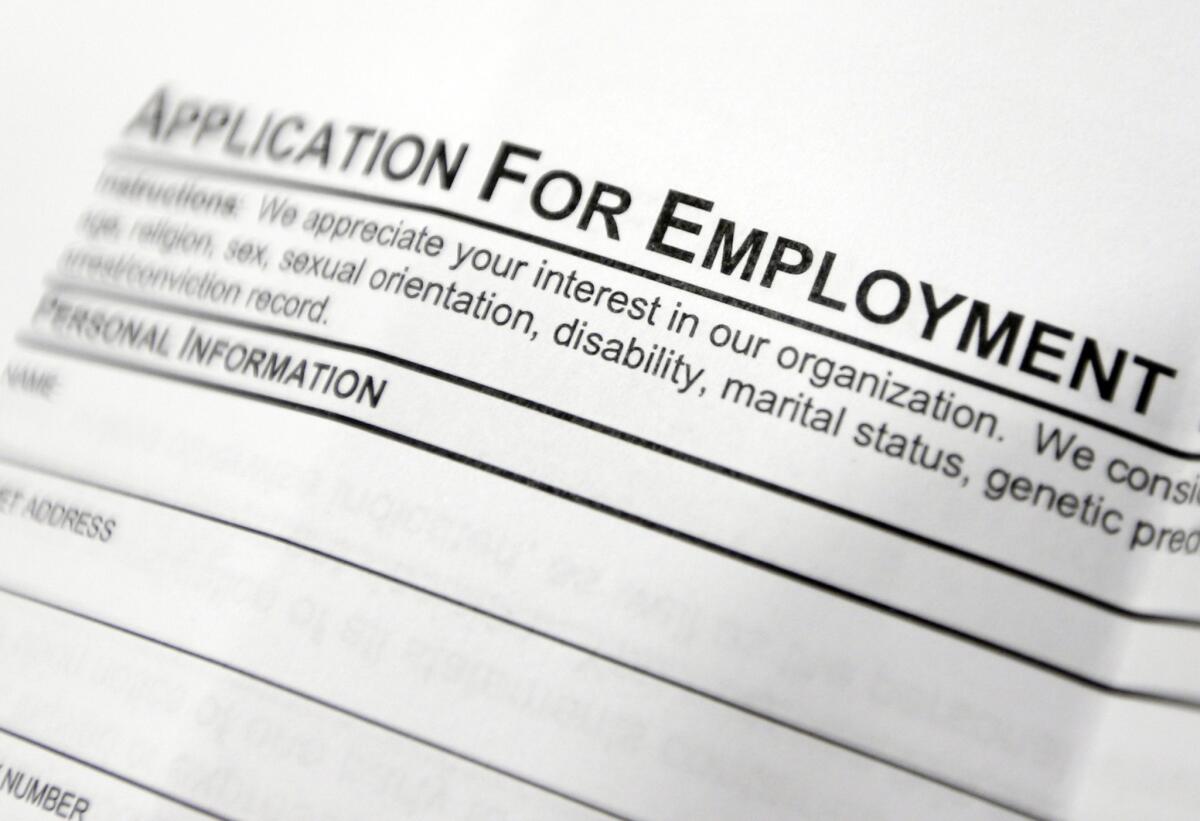Opinion: Why the drop in the unemployment rate isn’t the good news we need

More jobs were created in April than forecasters expected, and unemployment nationally dropped to 6.3%, the lowest it’s been since 2008 in the early going of the Great Recession. You’d think that would be good news. But there are numbers, and then there are numbers.
As Businessweek points out, the numbers came in higher than the median expectation of economists it surveyed, which raises some questions about how they might be revised next month.
“What’s more, that good news was offset by some equally surprising bad news,” Peter Coy writes. “An alternate measure of employment, surveying households rather than establishments, showed an outright decline of 73,000 jobs. The only reason the unemployment rate fell is that the labor force shrank by about 800,000 people.”
Another look at the April jobs report: Why is the workforce shrinking?
Overall, analysts are divided over what it means. A steadily improving economy? Or is the jobs growth offset by a persistently low level of workforce participation?
Focus on that last bit. While it’s good news that the Bureau of Labor Statistics reports that more people who wanted to work were able to find jobs, there remains a massive amount of worker disengagement.
According to the Bureau of Labor Statistics, the workforce participation rate dipped to below 63% last month, more than three points below its pre-recession level. That means a massive number of people have dropped out of the workforce. At the same time, new claims for unemployment rose last month, which means that while the number of people getting hired increased, so too did the number of workers losing jobs.
And the number of people who held part-time jobs (holders of full-time jobs who lost hours, or who work part-time because they can’t find full-time work) remained steady, as did the number of people considered “discouraged workers” – people who want to work but who have given up hope of finding a job. In fact, the gap between part-time workers and the unemployment rate continued to widen, suggesting that those getting jobs aren’t necessarily getting full-time work.
And for those who are working, the average hourly wage remained unchanged from the previous month, though wages were up 1.9% over the last year, compared with a 1.1% inflation rate over a similar time frame.
So the new unemployment numbers aren’t bad news, but they’re also not particularly good news.
Fortunately, Congress is on the ball and working hard to fashion a meaningful legislative program to address this grinding economic reality that affects the fiscal health and future of the nation. Oh, wait ….
ALSO:
Think California is bad for business? Think again.
California lawmakers want to close the diaper changing gap
Follow Scott Martelle on Twitter @smartelle
More to Read
A cure for the common opinion
Get thought-provoking perspectives with our weekly newsletter.
You may occasionally receive promotional content from the Los Angeles Times.










